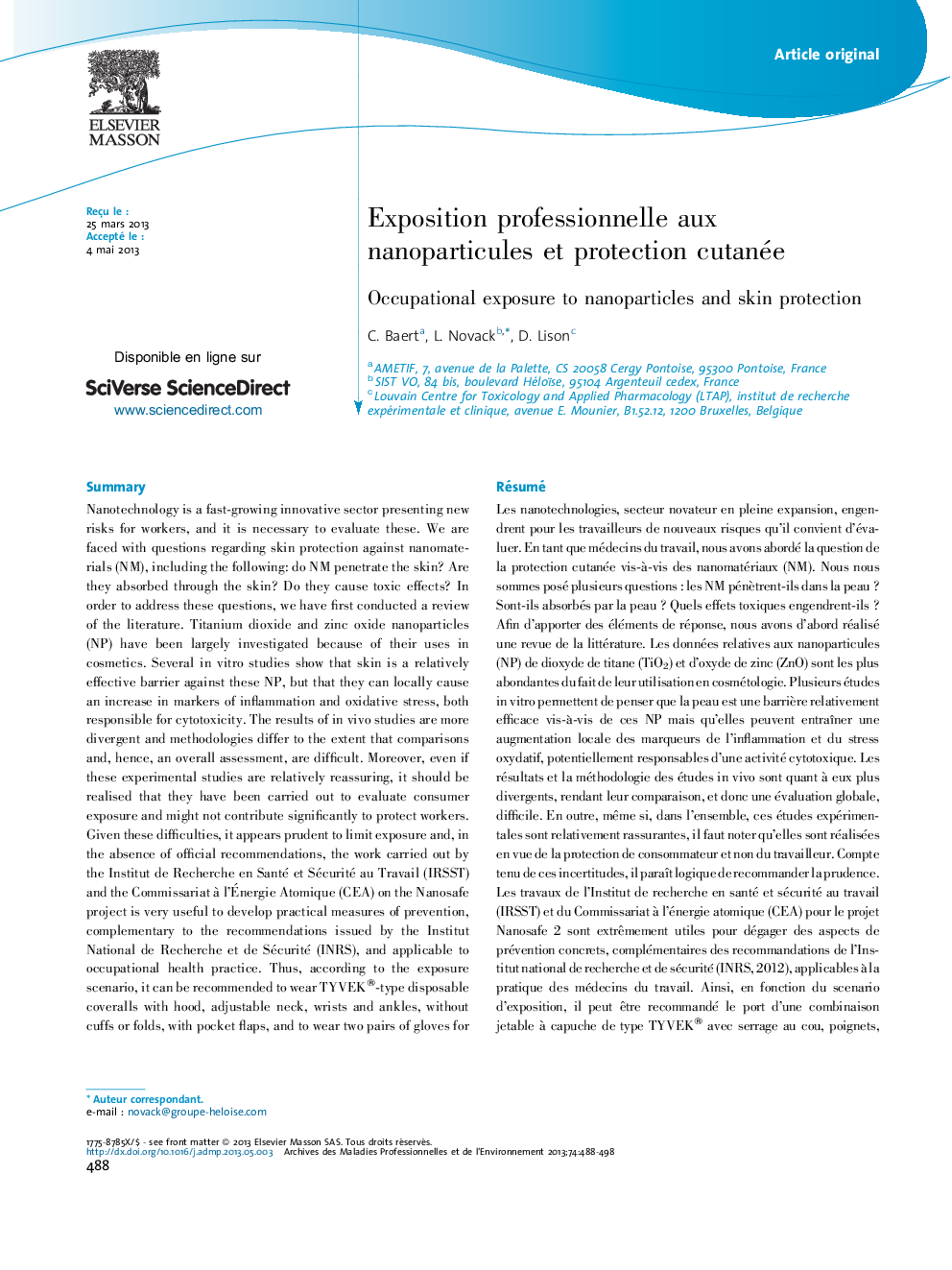| کد مقاله | کد نشریه | سال انتشار | مقاله انگلیسی | نسخه تمام متن |
|---|---|---|---|---|
| 2694381 | 1143642 | 2013 | 11 صفحه PDF | دانلود رایگان |
عنوان انگلیسی مقاله ISI
Exposition professionnelle aux nanoparticules et protection cutanée
دانلود مقاله + سفارش ترجمه
دانلود مقاله ISI انگلیسی
رایگان برای ایرانیان
کلمات کلیدی
موضوعات مرتبط
علوم زیستی و بیوفناوری
علوم محیط زیست
بهداشت، سم شناسی و جهش زایی
پیش نمایش صفحه اول مقاله

چکیده انگلیسی
Nanotechnology is a fast-growing innovative sector presenting new risks for workers, and it is necessary to evaluate these. We are faced with questions regarding skin protection against nanomaterials (NM), including the following: do NM penetrate the skin? Are they absorbed through the skin? Do they cause toxic effects? In order to address these questions, we have first conducted a review of the literature. Titanium dioxide and zinc oxide nanoparticles (NP) have been largely investigated because of their uses in cosmetics. Several in vitro studies show that skin is a relatively effective barrier against these NP, but that they can locally cause an increase in markers of inflammation and oxidative stress, both responsible for cytotoxicity. The results of in vivo studies are more divergent and methodologies differ to the extent that comparisons and, hence, an overall assessment, are difficult. Moreover, even if these experimental studies are relatively reassuring, it should be realised that they have been carried out to evaluate consumer exposure and might not contribute significantly to protect workers. Given these difficulties, it appears prudent to limit exposure and, in the absence of official recommendations, the work carried out by the Institut de Recherche en Santé et Sécurité au Travail (IRSST) and the Commissariat à l'Ãnergie Atomique (CEA) on the Nanosafe project is very useful to develop practical measures of prevention, complementary to the recommendations issued by the Institut National de Recherche et de Sécurité (INRS), and applicable to occupational health practice. Thus, according to the exposure scenario, it can be recommended to wear TYVEK®-type disposable coveralls with hood, adjustable neck, wrists and ankles, without cuffs or folds, with pocket flaps, and to wear two pairs of gloves for handling NP powder, or butyl or neoprene for handling nanoparticles in colloidal solution.
ناشر
Database: Elsevier - ScienceDirect (ساینس دایرکت)
Journal: Archives des Maladies Professionnelles et de l'Environnement - Volume 74, Issue 5, November 2013, Pages 488-498
Journal: Archives des Maladies Professionnelles et de l'Environnement - Volume 74, Issue 5, November 2013, Pages 488-498
نویسندگان
C. Baert, L. Novack, D. Lison,